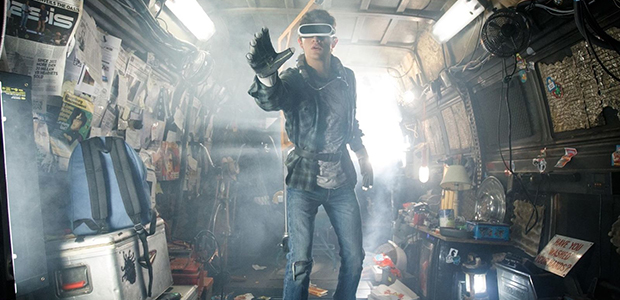
Imagine going over to a friend’s place and crashing on a seat next to him doing nothing but watching him play a video game for over two hours. Now imagine this friend happens to be director Steven Spielberg and you might get an idea how numbing it is to sit through Ready Player One, a virtual reality romp set in the future with only one objective – an over-eagerness to please pop culture enthusiasts who might revel at its abundance of characters and references with very little effort on actually telling a meaningful story.
Reader Player One is set in a distant future where the world has seemingly succumbed to the charms of virtual reality. Life in this future is so dreary and drab that everyone spends countless hours (and personal fortune) whiling away their time in what is known as the OASIS, where, via digital avatars, they can be anyone they want to be. What sets the film in motion is the death of James Halliday, founder and creator of OASIS, who leaves behind cryptic clues to find a set of keys that will give the discoverer essentially complete control over OASIS. Vying for glory are a bunch of individuals and corporates, all of whom race and compete against each other in scenes within the virtual world based on vile looking motion capture mixed with puerile CGI.
The problem isn’t just the visual overload. The film functions by being the biggest, most ambitious cinematic amalgamation of video game, movie and even musical references ever, primarily from the 80’s and 90’s. What starts off as being fun quickly gets banal and yes, tiring. You see King Kong, then the DeLorean from Back to the Future and also the bike from Akira, all within seconds of each other, and that’s just the warm-up. Scene after scene, dialogue after dialogue, the film starts to feel like a collection of references and little more, a celluloid love letter to a by-gone era on the surface but really, to my mind, just an exercise in fuelling fanboy love for the obscure objects of their obsession.
What must have seemed like a great idea on paper (the book, unread by me, is a cult hit) quickly dissolves into a wild cosplay orgy of nostalgia to give viewers short-lived bursts of glee in recognizing the familiar, which does little to justify the liberal use of the intellectual property sprinkled all over the place. In fact, to me, they were distracting because they weren’t used purposefully (compared for example with how inventive Wreck-it Ralph was with the same approach). The protagonist, a dull looking lad named Wade Watts, wears a Thundercats belt. Someone else has a Mortal Kombat emblem on their jacket. Why? How does this wall-to-wall usage of very recognizable objects, characters or things help move the story along? It simply doesn’t. The only scene where Ready Player One goes above rote homage (and this is, in many ways, the film’s highlight) finds the characters entering the world of another film to amusing and refreshing results. This is because it does something very daring in this short sequence – it takes a beloved property known to many and remodels it for its own use in a very idiosyncratic way.
Ready Player One also completely fails to generate any sense of threat in the virtual world where we spend most of our time. Unlike the Matrix (or even Inception) the threats of the virtual/other world do not manifest as dangers in the real world. At worst, characters killed as avatars, regenerate with the loss of all their scores and collected wealth. This never allows the stakes to rise and what we’re left with is a safe, overindulgent and largely uninvolving chase film that ends with a hokey message about spending more time in the real world. Ironic, coming from a film that fails to follow its own advice.
Rating: 



